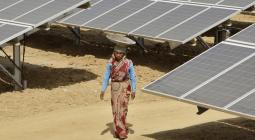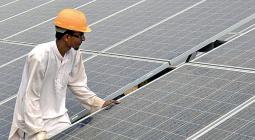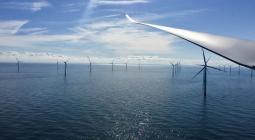Policy certainty will help India to achieve 2030 renewable energy goal – IEEFA.

Policy certainty will increase domestic and international investment into India, and help the country get back on track to it's 2030 renewable energy goal says a new report by the Institute for Energy Economics and Financial Analysis (IEEFA).
The new report India’s Renewable Energy Policy Headwinds – Recommendations for Urgently Accelerating Activity in the Renewable Energy Sector states that a number of recent policy positions have undermined growth in India’s renewable energy sector.
“India is one of the world’s largest and fastest-growing markets for renewable energy and power transmission,” says report author and IEEFA’s Director of Energy Finance Studies Tim Buckley.
“Domestic renewable energy tariffs are now two thirds the cost of domestic coal-sourced power tariffs and half that of new imported thermal power costs."
“India must be very proud of this result, and they must leverage this opportunity to enhance energy security whilst securing deflationary domestic energy investments.
“The opportunity cost of delaying India’s electricity sector transition is too high.
“With a few policy tweaks, India could be back on track to meet its’ ambitious target of 450 gigawatts of renewables by 2030.”
The IEEFA report identifies a number of policies currently stifling growth in renewable energy in India. They include the imposition of the solar cell and module trade duty in 2017, which the government is now looking to extend beyond 2020.
Click here for more of the latest smart energy news on the Indian subcontinent.
he duty has neither reduced imports nor significantly improved the competitiveness of Indian manufactured solar cells. Instead, it has severely slowed down solar installs in India, both because of the extra cost imposed but equally due to the confusion on delayed implementation.
“The uncertainty of this trade duty has been one of the most serious impediments to India’s renewable energy-momentum,” says co-author Kashish Shah, IEEFA’s energy finance analyst.
“Instead of trying to make Indian manufactured solar cells competitive by increasing the price of imported modules, the industry needs an assured offtake in domestic markets, as was achieved in the recent, very successful solar manufacturing tender. It also needs to be incentivised for exporting.”
Better centre-state coordination on renewable energy development and increasing the expansion of necessary transmission networks and balancing capacity (batteries, pumped hydro storage, demand response management and more flexible thermal capacity) are further policy areas requiring immediate attention.
“Renewable energy developers are currently experiencing delays and cost overruns while waiting for the central and state governments to talk to each other and streamline their activities. This is jeopardising their project economics and stalling further investment,” says Shah.
The report finds a key prerequisite for continuing India’s renewable energy investment ambition is concurrently building out and modernising India’s national transmission grid to accelerate the enormous progress achieved over the last decade.
“India could attract $500 billion to $700 billion in new investment by 2030 – the opportunity is huge,” said Buckley.
“To do this, India’s grid must be urgently expanded. The slow-down in transmission capacity is slowing India’s renewable energy ambition.
“And the continuing ballooning underfunding of subsidies and rising state-discom debt is severely hampering the financial industry’s ability to finance new renewable energy development, as is some state’s desire to renegotiate on projects. This is not on – and creates instability for investors.”
The report concludes that sovereign risk, policy risks and erratic discom payments are all creating unnecessary financial constraints for the Indian renewable energy sector.
“$40-60 billion of non-performing assets in the thermal power generation sector has combined with discom payment delays to impair various financial institutions’ ability to lend to the renewable sector at a time when investment is needed,” said Buckley.
13 February 2020
Smart-energy International




